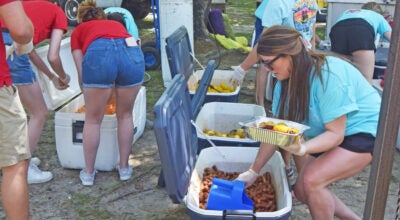Engineer: Landfill fails test
Published 2:00 am Saturday, March 19, 2011
An outside analysis by an engineer hired by Citizens for a Clean Southwest Alabama has rated the proposed Conecuh Woods landfill as poor based on criteria in the county’s Solid Waste Management Plan.
That contrasts with the evaluation from an engineering firm hired by the Conecuh County Commission to review the application for a 5,000-acre landfill near Repton. The county‘s outside analysis, done by Engineering Service Associates of Birmingham, gave a score of 37. ESA also wrote the county’s Solid Waste Management Plan.
Engineer Hal Wood, who has worked for the Alabama Department of Environmental Management and has experience in permitting, construction and operation of landfills, gave the project a score of 20. The minimum for an acceptable site is 28 points.
Wood said he believes the site of the landfill is unsuitable because of the soil types present there.
“The soil types present at the proposed location are poorly rated by the Natural Resources Conservation Service for daily cover and final cover,” he wrote in a statement to the county commission. “Daily cover is critical for sanitary landfill operations to vector and odor control, and to minimize leachate generation.”
Wood also said the site is located in the Bahamas Fracture Seismic Zone, where earthquake activity has occurred, and that sinkholes have developed nearby.
“There are also wetlands present along and adjacent to the drainage features mentioned,“ Wood said. “The proposed facility layout indicates that some of these wetlands areas are to be filled. Wetlands are important ecological systems and should be avoided in any landfill design. A wetland area at a proposed landfill site should not be filled simply to gain airspace.”
In his evaluation of the criteria for the landfill, Wood gave a “poor” rating to several areas — including those that scored high on the evaluation prepared for the county commission.
“The proposed facility is in no way consistent with the county’s solid waste needs,” Wood wrote. “The proposed volume exceeds the projected needs by 350 times.”
Wood also said the facilities proximity to existing or proposed major solid waste producers is poor; that there are a number of sensitive land uses — including seven churches — within a mile of the proposed site, and that there are 59 homes counted within a mile of the site or along local access roads to the proposed site.
Wood also rated as poor the perceptions of the facility’s impact on the local economy and property values.
“Most host communities, including the Repton community, believe that mega-landfills will reduce or diminish property values and that the benefits to the local economy are not worth the host community fees that are dedicated to providing the infrastructure needed to support the facility and not to area improvements that actually benefit residents,” Wood wrote. “For example, host fees will be used to improve roads for garbage trucks to drive on. Even if host fees are used to build parks or activity centers, the traffic and odor of the landfill may offset the benefit.”





